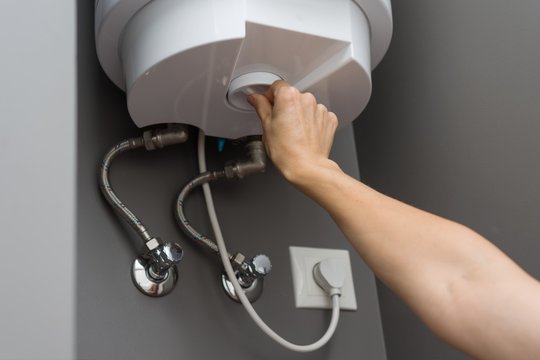Maintaining Your Home's Hot Water System: Essential Guidelines
Maintaining Your Home's Hot Water System: Essential Guidelines
Blog Article
What're your thoughts concerning What Kind of Maintenance Do Water Heaters Need??

Warm water is essential for everyday convenience, whether it's for a revitalizing shower or washing dishes. To guarantee your hot water system runs efficiently and lasts longer, normal maintenance is essential. This short article gives useful suggestions and understandings on just how to maintain your home's hot water system to stay clear of interruptions and pricey repairs.
Intro
Preserving your home's warm water system could seem overwhelming, but with a few straightforward actions, you can ensure it operates efficiently for several years to find. This guide covers everything from comprehending your hot water system to DIY upkeep ideas and understanding when to hire specialist aid.
Value of Maintaining Your Hot Water System
Normal maintenance not just extends the lifespan of your hot water system but additionally guarantees it runs successfully. Disregarding upkeep can lead to reduced effectiveness, greater power costs, and also premature failure of the system.
Indications Your Warm Water System Needs Upkeep
Knowing when your warm water system requires focus can protect against significant problems. Look out for indicators such as inconsistent water temperature, unusual noises from the heating unit, or rusty water.
Understanding Your Warm Water System
Prior to diving right into upkeep jobs, it's valuable to understand the basic components of your hot water system. Generally, this consists of the hot water heater itself, pipes, anode rods, and temperature level controls.
Regular Monthly Upkeep Tasks
Routine monthly checks can help capture small issues before they escalate.
Purging the Water Heater
Purging your water heater gets rid of debris build-up, boosting efficiency and prolonging its life.
Monitoring and Changing Anode Rods
Anode poles stop rust inside the container. Checking and replacing them when broken is critical.
Checking and Readjusting Temperature Settings
Readjusting the temperature settings makes sure optimum efficiency and safety.
Do It Yourself Tips for Upkeep
You can do numerous upkeep tasks yourself to maintain your hot water system in leading condition.
Checking for Leakages
Consistently examine pipelines and links for leakages, as these can bring about water damage and higher costs.
Checking Pressure Alleviation Valves
Examining the pressure safety valve ensures it functions appropriately and avoids excessive stress buildup.
Protecting Pipelines
Insulating hot water pipelines minimizes warm loss and can conserve power.
When to Call a Professional
While do it yourself maintenance is valuable, some concerns require professional know-how.
Complex Issues Needing Expert Aid
Instances include major leaks, electrical issues, or if your hot water heater is consistently underperforming.
Routine Professional Maintenance Benefits
Expert upkeep can consist of detailed inspections, tune-ups, and making sure compliance with safety requirements.
Conclusion
Routine upkeep of your home's warm water system is essential for performance, long life, and expense financial savings. By adhering to these pointers and understanding when to seek expert help, you can guarantee a trustworthy supply of warm water without unanticipated disturbances.
How to Maintain an Instant Hot Water Heater
Before tinkering with your hot water heater, make sure that it’s not powered on. You also have to turn off the main circuit breaker and shut off the main gas line to prevent accidents. Also turn off the water valves connected to your unit to prevent water from flowing into and out of the appliance. 2. When you’re done, you have to detach the purge valves’ caps. These look like the letter “T†and are situated on either side of the water valves. Doing so will release any pressure that has accumulated inside the valves while at the same time avoid hot water from shooting out and burning your skin. 3. When the purge valves’ caps are removed, you have to connect your hosing lines to the valves. Your unit should have come with three hoses but if it didn’t, you can purchase these things from any hardware or home repair shops. You can also get them from retail stores that sell water heating systems. Read the user’s manual and follow it to complete this task properly. When the hosing lines are connected, open the purge port’s valves. 4. You should never use harsh chemical cleaners or solutions when cleaning your unit. Make use of white vinegar instead. It should be undiluted and you’ll probably use about 2 gallons. 5. Now flush your water heater. This task should probably take about 40 minutes. We can’t give you specific directions for this because the procedure is carried out depending on the type, model and brand of your heater. With that being said, refer to the user’s manual. 6. When you’re done draining the unit, you have to turn off the purge port valves again. Remove the hosing lines that you earlier installed on each of the water valves. Put the valve caps (purge port) back in their respective places and be very careful so as not to damage the rubber discs that are found inside these caps. 7. Now that everything’s back in place, check your user’s manual again to find out how to reactivate your water heating system. 8. Once it is working, turn one of your hot water faucets on just to let air pass through the heater’s water supply pipes. Leave the tap on until water flows smoothly out of it. https://www.orrplumbing.com/blog/2014/september/how-to-maintain-an-instant-hot-water-heater/

We were made aware of that editorial about Water Heater Maintenance Tips You Can't Afford to Forget through an acquaintance on our other web page. Don't hesitate to take the opportunity to share this entry if you appreciated it. Many thanks for being here. Come back soon.
Click Here Report this page